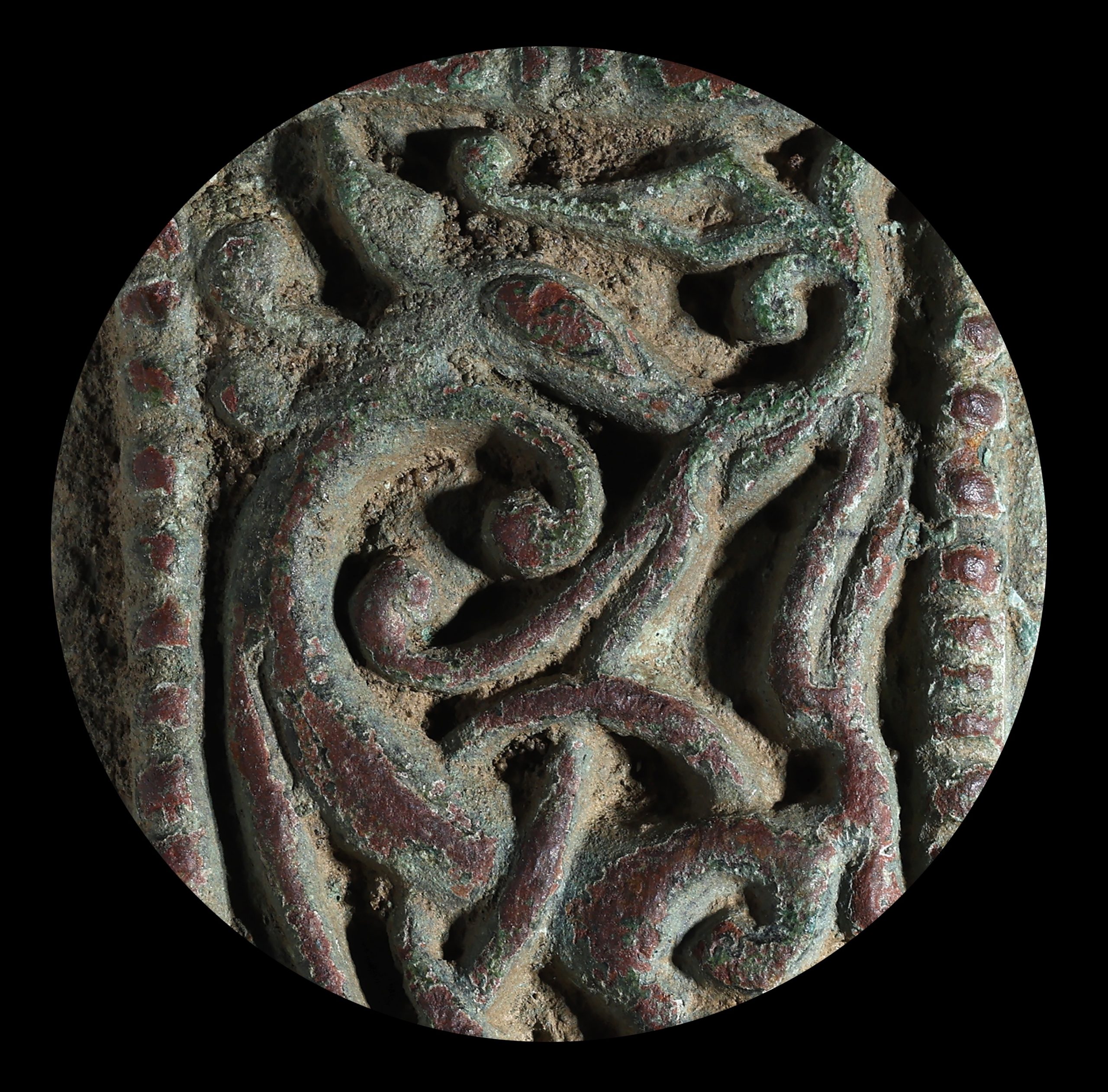
A 1,000-year-old Viking relic, discovered in a field in Norfolk, U.K., by a hobby metal detectorist, is headed to auction, where it could bring in more than $30,000.
In January, Jason Jones, who works in construction, set out with his wife to a field in the East Anglian countryside, armed with his trusty Minelab Vanquish 540. The same area had previously yielded two medieval silver coins and this visit likewise did not disappoint.
“I returned to the area where the coins were found and got a loud signal, and at a depth of just two inches, found an unusual bronze object,” Jones said in a statement.
The couple was speechless at the find and unsure of what it could be. They posted an image of the artifact on Facebook and learned it dated back to the Viking era.
The image of the Viking die that Jason Jones shared online. Photo: Jason Jones.
“My inbox went crazy with compliments and people trying to help identify the find,” Jones told The Daily Mail. “Straight away, people from Scandinavia suggested it being a Viking piece of the Urnes style.”
Measuring about 5.5 inches in length, the object is a Pressblech die—an object used for making foil mounts—that had been cast in bronze, with a high-relief design on its face linking it to the 11th century and the later phase of Viking art. The ornamentation depicts what is likely the Yggdrasil, a sacred tree in Norse mythology that connects nine worlds, entwined by a serpent known as the Níðhöggr. A fleur-de-lis forms the tail of the mythical creature.
Side view of the high-relief design on the Norfolk Viking Urnes die. Photo courtesy of Noonans.
After notifying the local archaeologist of his discovery and registering it with the Portable Antiquities Scheme, Jones will now see the Viking die hit the block at Noonans on July 18 with an estimate of £16,000 to £24,000 ($20,280 to $30,420). He plans to split the proceeds with the landowner on whose plot he found the object.
According to Nigel Mills, Noonan’s specialist in coins and artifacts, the object is of particular significance for its function and the site where it was discovered.
“The die would have been used to make a stamped foil of thin metal which would display the pressed-out image,” he explained in a statement. “From its find spot, the date and design it is possible that the die was used on a Viking iron helmet to make ornamentation to the cheek guards.”
The Norfolk Viking Urnes die. Photo courtesy of Noonans.
This militaristic purpose lines up with an era in England marked by Norman invasions led by William the Conqueror. In 1066, King Harold II’s troops clashed with William’s army near Hastings in East Sussex, engaging in a nine-hour-long skirmish during which Harold was killed. The battle heralded the end of Anglo-Saxon rule and the beginning of the Norman conquest.
Mills further pointed out to The Daily Mail that designs similar to the Viking Urnes die can be found on the Sutton Hoo helmet, which dates back to the 6th and 7th centuries.
More Trending Stories:
A Norwegian Dad Hiking With His Family Discovered a Rock Face Covered With Bronze Age Paintings
Lisa Schiff Questioned the Validity of Art Appraisals. Days Later, She Was Sued for Fraud